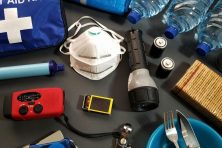Marathoners Can Save Big With These Running Gel and Energy Ball Recipes

Training for and running long-distance races isn’t just exhausting — it can also be expensive.
Aside from race fees and running gear, you have to consider the cost of fuel. Splurging on gels, chews and electrolyte powder from a running or fitness store can put a real strain on your wallet.
To give you an idea of how much I spent on fuel while training for my last marathon, I did some math — something I try to do as infrequently as possible — and I was shocked by the numbers.
My fuel of choice was Huma Chia Energy Gel. If you buy it directly from the website, you’d pay $56 for a box of 24 gels, which works out to about $2.33 per gel.
In addition to the Huma, I also added Tailwind Caffeinated Endurance Fuel to my water. A bag of Tailwind costs $38.99 on the manufacturer’s site. That bag is good for 50 servings, which comes out to 78 cents per serving.
On a 20-mile run, I typically had about three servings of Tailwind and three of the Huma Chia Energy Gels. That meant I was spending around $9.33 to fuel a 20-mile run.
Once I realized how much I was spending on pre-made fuel, I decided to look into making my own versions to take on the run. The following recipes helped fuel me on runs longer than 10 miles and cost a fraction of the price.
Date Energy Balls

There are literally hundreds of recipes online for date energy balls. Whether you like coconut, chocolate chips or peanut butter, chances are you’ll find a recipe you love. I’ve tried a few of them, but for running, I’ve found keeping it simple is best.
For my date energy balls, I throw approximately 15 medjool dates and ¾ cup of sunflower seeds into a food processor and pulse until everything looks gooey and delicious.
I roll the mixture into small balls and place them on a tray or baking sheet lined with parchment paper, and then freeze them. Once frozen, I pop them in a zip-top bag and throw them back in the freezer.
I’ll often eat these as a snack before an early morning weekday run or take a few with me on a longer run to keep my energy levels up. You can eat them frozen, but if you prefer them slightly thawed, take them out of the freezer about 10 minutes before you plan to eat them.

Chia Energy Gel

Making your own chia energy gel is much easier than you’d imagine. Simply soak some chia seeds in water to plump them up, and then drain and mix them with pureed fruit.
I like to use strawberry and banana, but you could also add sweet potato or canned pumpkin if you’re looking to sneak in some veggies. I find the fruit to be sweet enough on its own, but you could always add honey or maple syrup to enhance the flavor.
If you need extra electrolytes, No Meat Athlete recommends adding ¼ teaspoon of salt substitute and ⅛ teaspoon of baking soda to your gel to help replenish the minerals you sweat out on a tough run. He also has a full recipe for energy gel if you want a thicker version that’s more like the store-bought stuff, though I personally like the simplicity of pureed fruit and chia seeds.
Make your gel the night before your long run and store it in the fridge. In the morning, pour it into a sturdy zip-top bag or a baby-food pouch and head out on your run. Aim to ingest about 1 ½ ounces for every 30 to 45 minutes of exercise — I use these 5-ounce pouches and one typically lasts me through a 12- to 15-mile run.
Ready-Made Options
If you don’t have the time or desire to make your own energy balls or gel, there are plenty of fueling options available at your local grocery store.
Raisins or other dried fruit can be an excellent mid-run fuel, according to Greatist. If you have a sweet tooth and need something with less fiber, try eating some gummy bears or marshmallows during your run to replenish your energy.
And if you’re training for an ultramarathon, take a peanut butter and jelly sandwich along with you on your run to keep your tummy from rumbling.
Proper Fueling

No matter what you choose as your long-run fuel, make sure you’re fueling early and often. Runner’s World recommends you start fueling 30 minutes into a long run and repeat it every 30 to 60 minutes.
Depending on your body, you might prefer taking in small bits of fuel every 15 to 20 minutes or larger amounts every 60 to 75 minutes.
The amount of fuel you need on a run largely depends on your body. This is something you need to practice time and time again while training to make sure you get it right on race day.
The last thing you want to deal with on race day is an upset stomach (picture the port-a-potties along a race course), so it’s vital you stick to the nutrition plan you used during training since that’s what your body is used to.
Training for and running a long-distance race can be exhausting and expensive — but if you train and fuel your body the right way, it’ll be worth all the hard work.
Catherine Hiles is a half-marathon junkie whose proudest moment is running 13.1 miles with her daughter in a stroller. She plans on running a 50K one day when she’s not so tired all the time.












